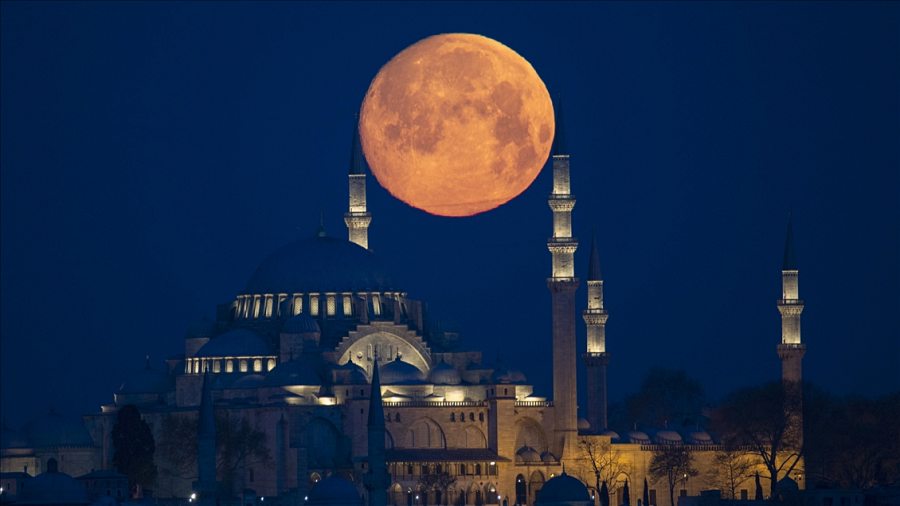![]() Full moon rises over the Suleymaniye Mosque during the holy Islamic fasting month of Ramadan in Istanbul, Turkey on April 26, 2021. ( İsa Terli – Anadolu Agency )
Full moon rises over the Suleymaniye Mosque during the holy Islamic fasting month of Ramadan in Istanbul, Turkey on April 26, 2021. ( İsa Terli – Anadolu Agency )
Sun 02 July 2023:
The full moon in July will appear brighter in the night sky than any other full moon event this year, it is the first of four supermoons that will rise in 2023.
“A supermoon is when the moon appears a little bit bigger in our sky,” said Dr. Shannon Schmoll, director of the Abrams Planetarium at Michigan State University. “As the moon goes around the Earth, it’s not a perfect circle. So, there are points in its orbit where it’s a little bit closer or a little bit farther from the Earth.”
The next Full Moon occurs at precisely 11:39 UTC on Monday, July 3 (7:39 a.m. EDT/4:39 a.m. PDT). However, with the very subtle way that the Moon transitions from ‘Gibbous’ to ‘Full’ and back to ‘Gibbous’, to the casual observer, it can appear full for up to three days!
The Old Farmer’s Almanac says the first full moon of summer will be more luminous and 224,895.4 miles (361,934 kilometers) from Earth.
According to retired NASA scientist Fred Espenak, the Super Buck Moon is anticipated to shine roughly 25 percent brighter than February’s apogee full moon (the farthest, smallest, and dimmest Full Moon of this year). This makes it nearly 13 percent brighter than an average full moon, such as those we witnessed back in April or May.
Nearly a hundred years ago, the Maine Farmer’s Almanac began referring to this particular moon as the “Buck Moon.” They attributed this moniker to the Algonquin peoples of the northeastern United States.
According to NASA, there are a myriad of names for each full moon, many of which have been passed down over centuries, tracing their roots to different cultures and traditions.
“Early summer is normally when the new antlers of buck deer push out of their foreheads in coatings of velvety fur,” says NASA. Another name for this lunar phenomenon is the Thunder Moon, due to the frequency of thunderstorms that occur in early summer.
July’s full moon also bears different names across various regions and cultures. In parts of Europe, it is known as the Hay Moon, reflecting the traditional haymaking season. Others refer to it as the Mead Moon. Hindu, Buddhist, and Jain cultures honor it as the Guru Full Moon (or Guru Purnima), a time to pay respect to spiritual or academic gurus.
Here are the full moons remaining in 2023, according to the Farmer’s Almanac:
● August 1: Sturgeon moon
● August 30: Blue moon
● September 29: Harvest moon
● October 28: Hunter’s moon
● November 27: Beaver moon
● December 26: Cold moon
SOURCE: INDEPENDENT PRESS AND NEWS AGENCIES
______________________________________________________________
FOLLOW INDEPENDENT PRESS:
TWITTER (CLICK HERE)
https://twitter.com/IpIndependent
FACEBOOK (CLICK HERE)
https://web.facebook.com/ipindependent
Think your friends would be interested? Share this story!





